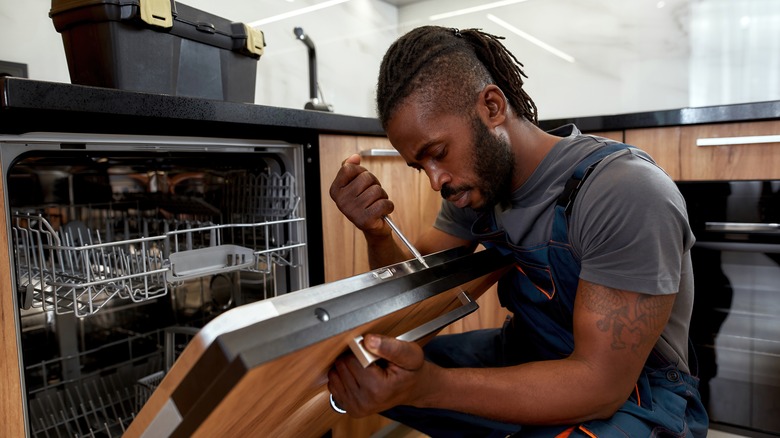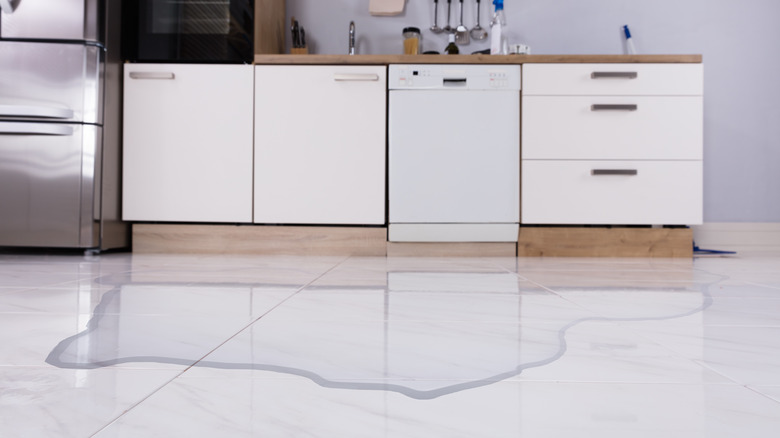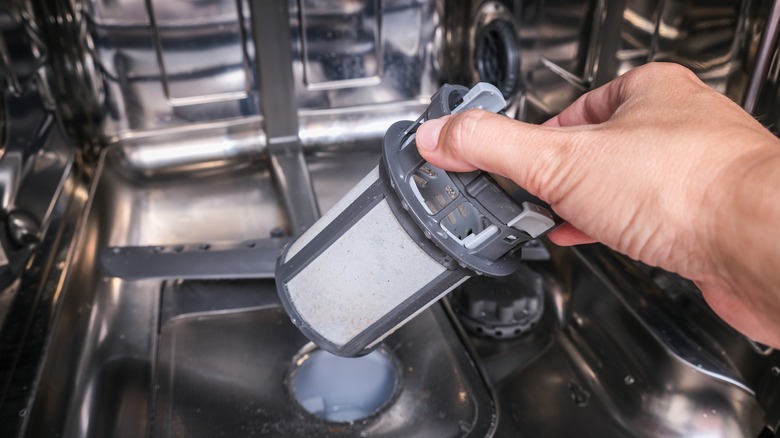When Should You Bring A Professional In To Inspect A Malfunctioning Dishwasher
If your dishwasher just doesn't seem to be cleaning your dinnerware as well as it should, you may be considering trying to fix it yourself. You might try different ways to use your dishwasher better, hoping that this corrects any problems and improves performance. However, there are certain situations when it's clearly time to call a professional repair person. For starters, if the machine is still under warranty, always call a pro to look at any issues. If you notice leaks, they can likely remedy those problems in short order as well. Additionally, having a pro check out your unit on a regular basis can help you keep bigger problems at arm's length.
Stephany Smith of My Handyman Services says in an interview with Reader's Digest Canada, "It's important for an experienced repairman to check for loose, damaged valves, tub, or door troubles that may further result in drips, leaks, and, even worse, in substantial water damages." Smith adds, "Professional help will keep the mechanics operating efficiently and save you from major repairs and replacement costs in the long run."
If the pro recommends a repair job, deciding whether to replace or repair a kitchen appliance often boils down to the age of the unit. The average repair cost for a dishwasher is about $150, while a new unit costs $970 on average. If your repair cost will be significantly higher than the average, a new dishwasher may be a better use of your money.
Best times to call a professional to repair a dishwasher
Be sure to call the pro to look at a problem whenever the dishwasher is still under warranty. Do not try to fix a problem yourself when a warranty is in effect, as your efforts could void the warranty, leaving you with an expensive bill to actually correct the problem later. Repairs under warranty should cost you nothing.
Asking for a professional's help in fixing the dishwasher is an especially good idea when you have concerns about leaks. Water damage around the unit can cause problems with wood damage on the floor or in kitchen cabinets. It also may lead to the formation of mold or unwanted odors. Fixing such leaks as quickly as possible is important to limit the damage. Techs often can fix these issues with a simple rubber gasket replacement or with a hose replacement that might be challenging for you to do on your own.
If you are considering calling a repair person to look at your dishwasher, be sure that the technician promises to give you an estimate of the cost before starting any repairs. You don't want the cost of repairs to closely approach the price of a new unit. Understand that the repair person probably will charge you a minimum fee for the visit of $70 to $130. Ask if the company will roll this fee into the overall repair job's cost if you go ahead and choose to fix the machine.
Issues with a dishwasher you may be able to fix yourself
When the machine is beyond its warranty period, a few instances exist where you may be able to perform a quick DIY fix on your dishwasher and have a positive result.
Properly cleaning your dishwasher on a regular basis is the best thing you can do as a homeowner to keep the machine running in good condition. Because of the constant presence of moisture and food particles inside the machine, you can end up with unwanted odors and grime. Bacteria may grow without your knowledge – more than half of all dishwashers randomly tested in a study showed bacterial and fungal growth. To clean the interior of the dishwasher, you can spray it with a cleaner and wipe it down, just like you would with your kitchen counters or the sink. You also can purchase cleansing tablets that you place inside the detergent cup before running the machine with no plates and silverware inside it.
Another key component of keeping the dishwasher running in top condition that you can easily do yourself is cleaning the filter. The filter consists of hard plastic and mesh that catches food particles and hair before they enter the drain tube. After locating the filter inside the dishwasher, turn it to the left a quarter-turn and lift it straight out of the base of the unit. Remove particles from the mesh and make sure it's as clean as possible before replacing it.


